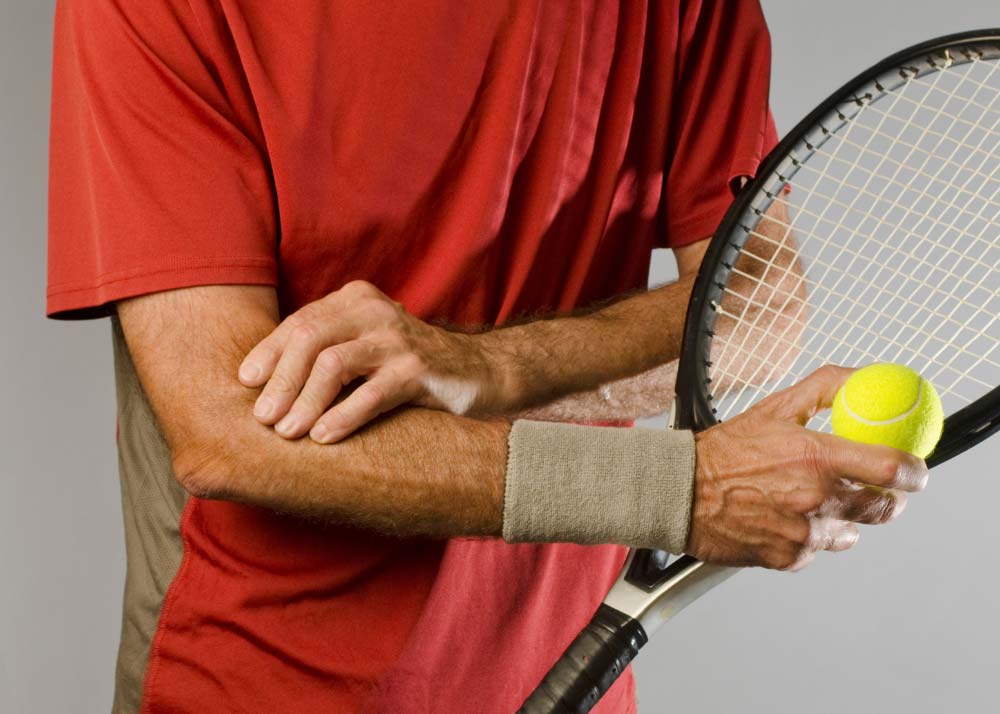Tennis Elbow (Lateral Epicondyalgia)
Lateral Epicondyalgia or Tennis Elbow is the most common overuse injury of the elbow, involving the extensor muscles of the forearm. Overuse of the muscles and tendons of the forearm and elbow together with repetitive gripping or manual tasks can put too much strain on the elbow tendons. These gripping or manual tasks require manipulation of the hand that causes maladaptions in tendon structure, that lead to pain over the lateral epicondyle.
Anatomy
The elbow joint is made up of three bones: the humerus (upper arm bone), the radius and ulna (two bones in the forearm). At the distal end of the humerus there are two epicondyles, one lateral (on the outside) and one medial (on the inside). The musculature involved is most commonly the Extensor Carpi Radialis Brevis (ECRB), but this injury can also involve the Extensor Carpi Radialis Longus (ECRL), Extensor Digitorum, and Extensor Carpi Ulnaris. The radial nerve is also in close proximity to this region, and divides into the superficial radial nerve and the posterior interosseous nerve.
Symptoms
Patients often report weakness in their grip strength or difficulty when carrying objects in their hand, especially with the elbow extended. They have complaints of pain just distal to and localized tenderness over the lateral epicondyle. Patients will commonly have pain with palpation of the lateral epicondyle, resisted wrist, or second or third finger extension.
Causes
This injury is often work-related. Any activities involving wrist extension, pronation or supination during manual labour, housework and hobbies are considered as important causal factors. A systematic review identified 3 risk factors: handling tools heavier than 1 kg, handling loads heavier than 20 kg at least 10 times per day, and repetitive movements for more than 2 hours per day. Other risk factors are overuse, repetitive movements, training errors, misalignments, flexibility problems, aging, poor circulation, strength deficits/muscle imbalance and psychological factors.
Treatment
When treating tennis elbow, a Physiotherapist may use a variety of different types of therapies, all with the same goals of pain relief, improve range of motion and improved function and strength. Treatment options include joint mobilisations, exercise programs that address strengthening weak muscles, improving posture, deep transverse frictions and massage, dry needling, stretches, ultrasound and activity modification.
As you can see, there is no one method to treat tennis elbow. The best option is to always work with your Physiotherapist, and allow them to choose the best method of treatment from your assessment and symptoms.
If you are suffering from elbow pain, how bout you do something about it? Book in to see an Optimum Physiotherapist today.








